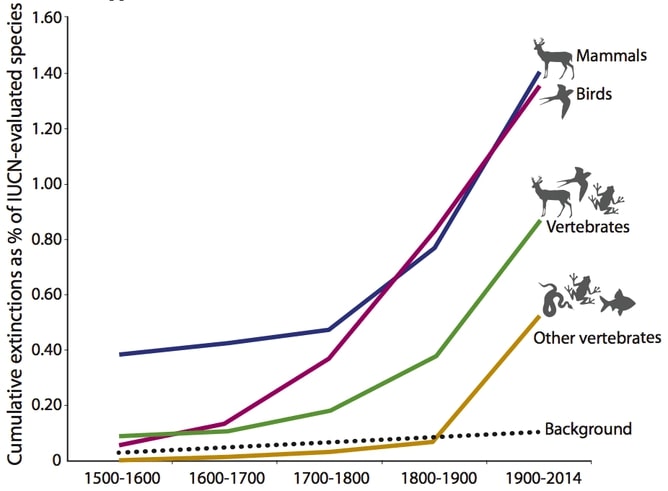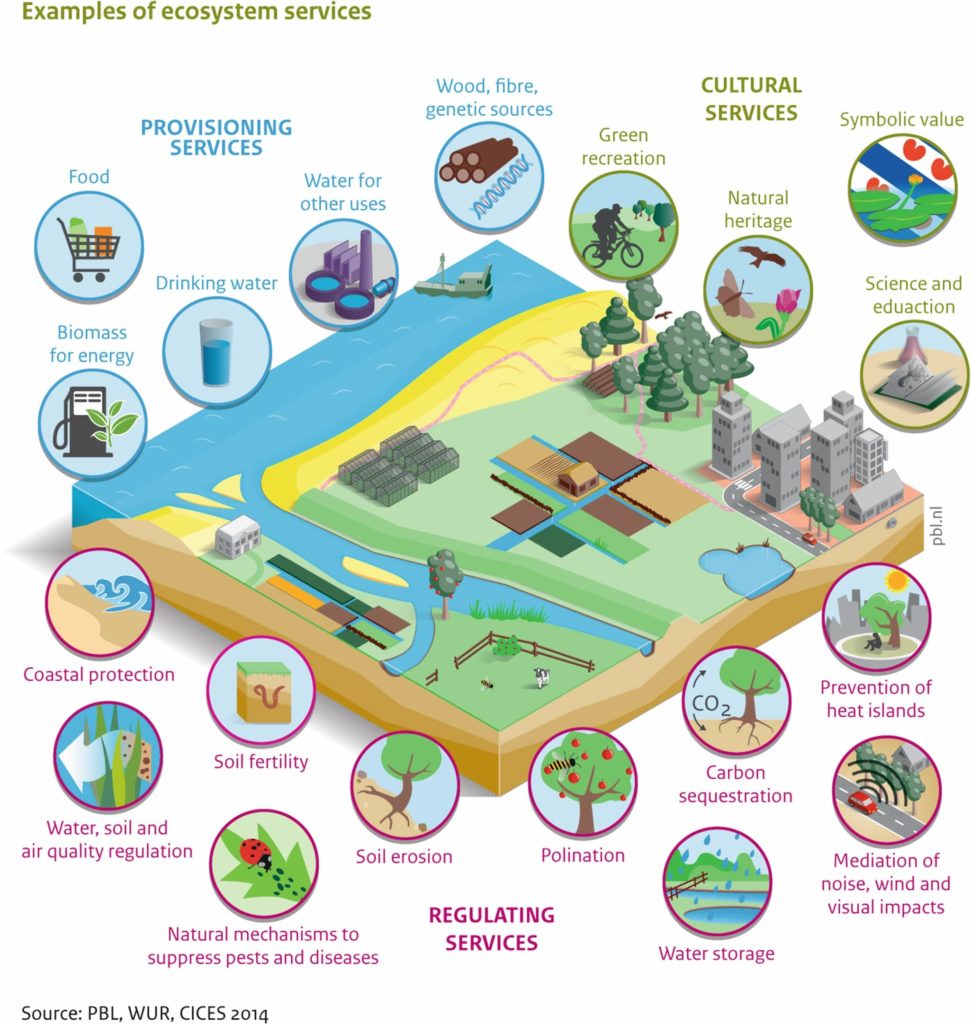Since the formation of the Earth, there have been five mass extinction events, the most recent was 66 million years ago during the Cretaceous period, famously leading to the extinction of the dinosaurs. However, in recent decades, scientists have found reason to think we may be in the midst of a sixth mass extinction.
—
A ‘mass extinction’ or ‘extinction event’ can be defined as a rapid and widespread loss of biodiversity (Gingerich, 2020). With the IUCN predicting that 99.9% of critically endangered species and 67% of endangered species may be lost within the next 100 years (IUCN, 2019), there are strong indicators for the presence of a 6th mass extinction event.

Cumulative vertebrate species recorded as extinct or extinct in the wild by the IUCN (2012). Dashed black line represents background rate. This is the ‘highly conservative estimate’. Source: Ceballos et al. (2015).
The human population is estimated to reach nearly 10 billion by 2050 (UN, 2019), so there will be even further increases in demand and consumption. This increasing population is threatening biodiversity in the following ways:
- Deforestation – Between 2000 and 2012, 2.3 million km2 of forest has been lost to deforestation, with only 0.8 million km2 gained (Hansen et al, 2013). Forests are vital ecosystems which support high levels of biodiversity as well as have regulatory functions such as carbon storage and water filtration (Foley et al, 2005).
- Agriculture – Increased agriculture poses a significant threat to biodiversity, often due to habitat loss (Perrings & Halkos, 2015). 43% of the world’s ice- and desert-free land is taken up by agriculture and it is responsible for a quarter of greenhouse gas emissions (Poore & Nemecek, 2018)
- Pollution – Ecosystems are impacted by various pollutants emitted from human daily activity, be it from cars, industry or agriculture. Some of the effects are acidification of the natural environment, increased ground-level ozone (harmful to plants) and the formation of dead zones. The latter occur when excess nutrients from fertilizers get carried away to large water bodies, fuelling algae blooms that lead to deoxygenation.
Why Is Biodiversity Important?
- Agriculture – 75% of all food crops rely on pollination by animals such as insects, birds and bats which are currently threatened with extinction. It is predicted that these vital pollinators may be extinct by the end of the century (ISPBES, 2019)
- Human health – biodiversity supports ecosystem services which allow the mitigation of air, heat, and noise pollution, which have all been shown to impact human health and wellbeing (Aerts, Honnay & Van Nieuwenhuyse, 2018)
- Ecosystem services – high biodiversity is key for ecosystem services and functioning (Isbell et al, 2011). Functioning ecosystems are needed to provide habitats and allow nutrient and water cycling as well as other regulatory and supporting services.

Source: de Knegt, Bart. (2019).
More on the topic: The Remarkable Benefits of Biodiversity
The Takeaway
The 2019 ISPBES Global Assessment Report on Biodiversity and Ecosystem Services suggests that human activity has directly resulted in 1 million plant and animal species facing extinction (ISPBES, 2019).
“if all species currently designated as critically endangered, endangered, or vulnerable go extinct in the next century, and if that rate of extinction continues without slowing down, we could approach the level of a mass extinction in as soon as 240 to 540 years” (Greshko, 2019).
This article was written by Lizzie de Lusignan.










![The Statistics of Biodiversity Loss [2020 WWF Report]](https://u4d2z7k9.rocketcdn.me/wp-content/uploads/2020/12/lprwinkyTHB-544x306.jpg)





